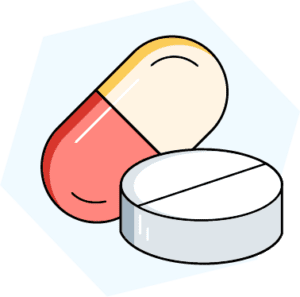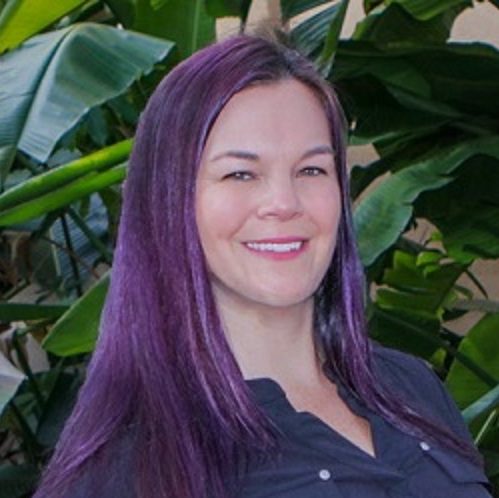Medicare Part D is Medicare’s Prescription Drug Coverage and is an important part of the Medicare system. This optional program is designed to help Medicare beneficiaries afford their prescription medications, making drugs more accessible for those who need them.
Operated by private insurance companies under federal regulations, Part D is not automatically included with Original Medicare Parts A and B. Instead, individuals who want this coverage must actively enroll in a plan. While Part D offers comprehensive coverage, it does not cover everything, making it necessary to understand exactly how the plans work.
Table of Contents
- 49 Million People Enrolled in Medicare Part D
- Understand Medicare Basics
- Understanding Medicare Part D (Medicare Prescription Drug Coverage)
- Types of Medicare Part D Plans
- What Are the Costs of Medicare Part D?
- What Is the Medicare Donut Hole, or Part D Coverage Gap?
- When You Need Financial Assistance: Medicare Extra Help
- How to Enroll in Medicare Part D
- Putting It All Together
49 Million People Enrolled in Medicare Part D
Of the 65 million people eligible for Medicare in 2022, 49 million chose to enroll in plans that provide Medicare Part D coverage. While enrollment in standalone drug plans has declined since 2019, more than half of the individuals enrolled in prescription drug plans receive the benefit through a Medicare Advantage Plan, also known as Medicare Part C.
Medicare Advantage Plans are a bundled alternative to Medicare Part A and Part B, also known as Original Medicare. In addition to providing Part A and Part B coverage, many Medicare Advantage plans also include Medicare Part D coverage. Some also provide additional benefits not covered by Medicare, such as coverage for dental, vision, hearing, and wellness services.
Keeping Original Medicare and purchasing a separate standalone Part D plan is also possible. Generally, you cannot buy a standalone Part D plan along with a Medicare Advantage plan. However, some exceptions exist for Part C plans that do not or cannot provide prescription drug coverage.
Understand Medicare Basics
When deciding which type of Medicare coverage is right for your needs, it’s important to understand how each part works and what it covers.
Medicare Part A
Medicare Part A, also known as Hospital Insurance, covers:
- Inpatient hospital stays
- Home health care
- Hospice care
- Skilled nursing facility care
- Nursing home care
You typically do not pay a premium for Part A coverage; however, Part A has a deductible that must be paid before it begins to pay benefits. In 2023, the Part A deductible is $1,600 per hospital benefit period (increasing to $1,634 in 2024). There is no limit to the number of periods per year, so you may have to pay this deductible more than once in a single year.
Medicare Part B
Medicare Part B, also known as Medical Insurance, covers a range of doctor’s services and healthcare that is provided on an outpatient basis. It also covers:
- Durable medical equipment
- Preventive services
- Clinical research
- Ambulance services
- Mental health services
- Limited outpatient prescription drugs
Unlike Part A, Part B typically involves a monthly premium along with an annual deductible. In 2023, the standard Part B premium is $164.90 per month, and the deductible is $226. This will increase to a premium of $174.70 per month and deductible of $240 in 2024.
Medicare Part C (Medicare Advantage)
Medicare Part C, or Medicare Advantage, is an alternative to Original Medicare. Part C plans must provide the same coverage as Part A and Part B and commonly include Medicare Part D. Some Part C plans come with an additional premium while others do not have an additional monthly cost beyond the standard Part B premium.
Understanding Medicare Part D (Medicare Prescription Drug Coverage)
Medicare Part D provides coverage that helps offset the cost of outpatient prescription drugs for covered individuals. Each Part D plan has a list of drugs it covers, called a formulary. The drugs are also divided into tiers, which dictate the out-of-pocket cost.
Part D plans work on a network basis, meaning that covered individuals must have their prescriptions filled by a pharmacy in the plan’s network. This is true even when Part D is combined with Original Medicare, which does not have plan networks.
Eligibility Criteria

To enroll in Medicare Part D, you must first be enrolled in both Part A and/or Part B. You can do this by enrolling in Original Medicare or choosing a Part C plan, which includes Part A and Part B coverage. There are no other eligibility requirements. Part D is available to Medicare-eligible individuals regardless of their income, health status, or the amount spent on prescription drugs.
What Does Medicare Part D Cover?
Medicare Part D covers a broad range of outpatient prescription drugs. However, each Part D plan may cover different drugs, depending on the plan’s formulary. The law requires Part D plans to cover drugs in certain protected classes, such as drugs that treat cancer or severe diseases like HIV/AIDS.
Generally, for a drug to be covered by Medicare Part D, it must be approved by the FDA (Food and Drug Administration) for sale in the United States, be available only by prescription, and be deemed medically necessary to treat a disease or indication approved by the FDA. This means that prescriptions prescribed off label may not be covered in some circumstances.
Formularies
Each plan may have a different formulary. However, the formulary must meet certain minimum federal standards. Part D plans must cover certain categories of drugs, and at least two distinct drugs must be covered within each category.
It is sometimes possible to request an exception if you or your doctor believes you need a prescription drug not covered by your plan.
Drug Tiers
Drug tiers are levels in a formulary. Each tier represents a different type of drug or drug cost. Generally, lower tiers have lower copayments and/or coinsurance and include generic drugs, while higher tiers have higher copayments and/or coinsurance and include brand-name and specialty drugs.
If your doctor or healthcare provider believes you need a higher-tier drug instead of a lower-tier drug, they may be able to ask the plan for an exception. If the exception is granted, you could pay a lower out-of-pocket cost.
Types of Medicare Part D Plans

When choosing a Medicare Part D plan, you typically have two primary options: a standalone plan, also known as a Prescription Drug Plan (PDP), or a bundled plan, commonly called a Medicare Advantage Prescription Drug Plan (MSPD).
Prescription Drug Plans
Prescription Drug Plans are standalone Medicare Part D plans that supplement Original Medicare. Standalone PDPs are purchased from a private insurance company and require beneficiaries to pay a separate premium. You may choose a PDP if you prefer the coverage offered by Original Medicare and want to supplement your healthcare with prescription drug coverage.
Medicare Advantage Prescription Drug Plans
Medicare Advantage Prescription Drug Plans bundle Parts A, B, and D into a single plan, which a private insurance company offers. They provide an all-in-one solution and may also include extra benefits, such as coverage for hearing aids, dental work, glasses, vision exams, and even gym memberships.
What Are the Costs of Medicare Part D?
The costs of Medicare Part D vary depending on the plan you choose and the prescription drugs you need. It’s typical for Part D plans to include expenses such as premiums, deductibles, and copayments or coinsurance.
Premiums
Medicare premiums are the amount you pay for your monthly coverage, regardless of whether you receive medical treatment. Standalone Part D plans typically require a monthly premium, which can vary based on your specific plan. Since Medicare Advantage plans bundle your coverage, there is no separate Part D premium.
You may have to pay higher premiums for your Part D coverage if you have a high annual income. In 2023, the Part D income-related monthly adjustment amount (IRMAA) threshold is $97,000 for individuals ($103,000 in 2024) and $194,000 for married couples filing jointly ($206,000 in 2024).
Deductibles

A Medicare Part D deductible is the amount you must pay out-of-pocket for your prescriptions before your plan begins to pay its share of your covered drugs. Some Part D plans have a yearly deductible, while others do not.
The amount of your deductible can vary depending on the plan you choose. However, plans may not charge more than the maximum allowed by law, which is $505 per year in 2023 ($545 in 2024).
Copays and Coinsurance
After meeting your deductible, you’re typically responsible for paying a copayment (a fixed dollar amount) or coinsurance (a percentage of the prescription drug cost) each time you fill a prescription. The amount you’re responsible for can vary depending on the plan and each drug’s tier.
Out-of-pocket Maximum
While there had previously been no out-of-pocket maximum for Medicare Part D plans, this has changed with the passage of the Inflation Reduction Act. In 2024, Medicare recipients are no longer required to pay a 5% coinsurance amount above the catastrophic coverage limit. In 2025, the law places a $2,000 cap on out-of-pocket spending, with a provision to index this amount in future years.
While laws regarding out-of-pocket maximums apply to every Part D plan, some plans may offer a lower out-of-pocket maximum. This may apply even before the new law goes into effect.
What Is the Medicare Donut Hole, or Part D Coverage Gap?
The Medicare Part D Donut Hole, also known as the coverage gap, occurs after you have spent a certain amount ($4,660 in 2023, increasing to $5,030 in 2024) on your covered drugs. During this coverage phase, instead of paying the copayment or coinsurance indicated by your plan’s formulary, you’re responsible for up to 25% of the cost of your covered drugs.
When Does the Donut Hole End?
The coverage gap ends when your spending has reached a pre-determined spending threshold. In 2023, you leave the donut hole when you’ve spent $7,400 on your covered prescription ($8,000 in 2024) medications during the plan year.
Once you leave the coverage gap, you enter the catastrophic coverage phase. This requires you to pay a small copayment or coinsurance for your covered drugs for the remainder of the year. However, these additional payments will be eliminated in 2024 when the new law is enacted.
When You Need Financial Assistance: Medicare Extra Help
Medicare Extra Help is a program that assists eligible individuals with Medicare prescription drug coverage costs. It can cover monthly premiums, annual deductibles, and copayments related to Medicare Part D prescription drug plans. Extra Help also eliminates the Part D late enrollment penalty, which is applied if you do not enroll in Medicare when first eligible.
To be eligible for Extra Help, you must be eligible for Medicare and typically must fall below the current limits for both your annual income and available resources. In 2023, the Full Extra Help program allows you to access Part D coverage with a $0 premium premium premium premium, $0 deductible, and copayments of up to $10.35 for brand-name drugs and up to $4.15 for generic drugs. Copayments will change to up to $11.20 for brand-name drugs and up to $4.50 for generic drugs in 2024.
How to Enroll in Medicare Part D
Navigating Medicare Part D enrollment can seem complex, but the following steps can help simplify the process. It’s important to take your time and research, so you can make an informed decision in selecting a plan that can likely meet your healthcare needs.
1. Determine Your Needed Medications and Budget
Begin by compiling a detailed list of your regular medications, taking note of specific dosages and manufacturers. With this information, explore each plan’s formulary to ensure your medications are included.
Remember that each drug is assigned to a tier in the formulary that dictates its cost. Analyze these tiers to calculate your potential out-of-pocket expenses. You may also want to determine your ideal budget for potential premiums, deductibles, and copays at this stage.
2. Compare the Options Available in Your Area
Once you understand your medication needs and budget, it’s time to start exploring plans. Medicare’s Plan Finder allows you to compare available Part D plans in your area based on various factors such as premiums, deductibles, copayments, drug coverage, and customer ratings.
Each plan receives a rating of one to five stars based on several categories, including customer service and quality of care. This can be an effective way to start narrowing down your options.
Also, remember to check the plan’s network to confirm that your preferred pharmacy is included or that suitable options are available. If it works for your lifestyle, you may also look for a plan that offers prescriptions by mail, which can reduce your costs.
When comparing plans, remember that a low premium does not necessarily make a plan cost-effective. Other variables, such as deductibles and copayments, can significantly impact costs. This makes it crucial to complete a thorough comparison before making your decision.
3. Enroll in Your Preferred Plan

Once you’ve selected a suitable plan that aligns with your healthcare needs and financial parameters, the final step is enrollment. This process can typically be completed in one of three ways: online, over the phone, or by mailing a paper enrollment form.
If you wish to speak to a representative over the phone, call Medicare at 1-800-MEDICARE (1-800-633-4227) or call the plan directly.
When you enroll, be prepared to provide your Medicare number and have your Medicare card available so you can confirm the date your Part A and/or Part B coverage began.
Enrollment Periods to Keep in Mind
When considering a Medicare Part D plan, it’s critical to understand the various enrollment periods and the actions you can take during each one.
- Initial Enrollment Period – Occurs three months before your 65th birthday, your birthday month, and three months after. You can join a Medicare Advantage Plan or Medicare Drug plan during this time. You may have to pay a Part D late enrollment penalty if you do not sign up for Part D coverage when you’re first eligible. This penalty remains in effect for as long as you have drug coverage.
- Initial Enrollment Period (New to Part B) – If you get Part B after your Part A coverage begins, you can join a Medicare Advantage Plan with or without drug coverage three months before your Part B coverage starts.
- Open Enrollment Period – Each year from October 15 to December 7, you can make various plan changes. If you’re using Original Medicare, you can join a Medicare drug plan or switch from one drug plan to another. You can also switch from Original Medicare to a Medicare Advantage plan, switch, join, or drop your current Medicare Advantage plan, or add or drop drug coverage.
- Medicare Advantage Open Enrollment Period – Applies only if you already participate in a Medicare Advantage plan. This enrollment period occurs within the first three months you have Medicare coverage, then from January 1 to March 31 each year. During this time, you can join a Medicare drug plan, drop your Medicare Advantage plan and return to Original Medicare, or switch to another Medicare Advantage plan, either with or without drug coverage.
Special Enrollment Periods
Special Enrollment Periods (SEPs) are times outside the standard enrollment periods when you can sign up for Medicare Part D. They typically occur when you experience certain life events, such as losing other credible prescription drug coverage, moving out of your plan’s service area, or qualifying for Extra Help. Generally, during the Special Enrollment Period, you can join a prescription drug or Medicare Advantage plan or switch to another plan.
Putting It All Together
Medicare Part D can be essential in managing your prescription drug costs. Understanding how it works, its coverage details and the enrollment process can empower you to make informed decisions and potentially save money on your healthcare expenses.
Once you’ve selected your prescription drug coverage plan, remember it’s not a one-time decision. Review your medication needs annually, as plans and formularies may change. If your healthcare requirements shift, you can use the applicable enrollment periods to adjust your coverage.
